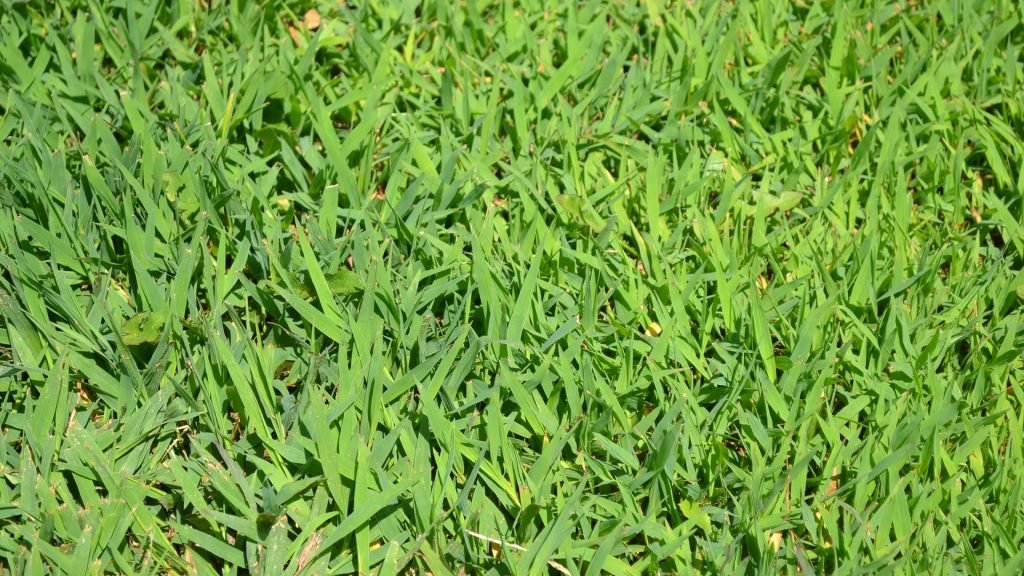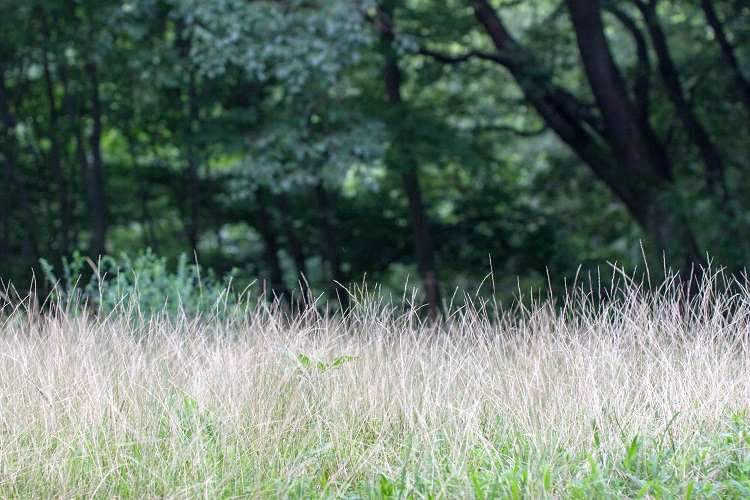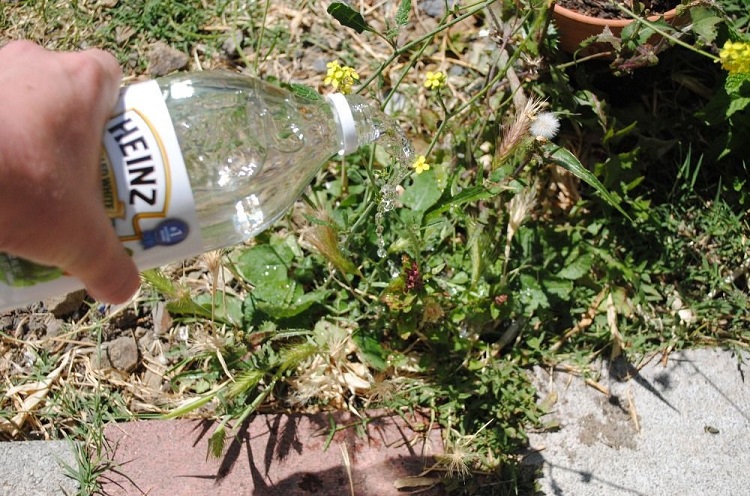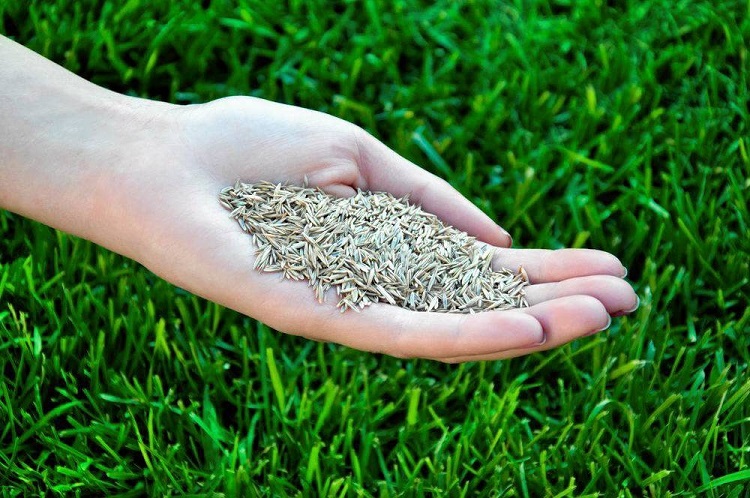
How Get Rid Of Crabgrass Without Damaging Your Lawn
Although it has the word “grass” in its name, crabgrass is actually a type of weed.
It’s an annual weed that spreads quickly because of how it produces many seeds every season. It’s not always easy to spot weeds in your lawn, but crabgrass has coarse and yellow leaves so you can see it clearly among your green leaves.
What conditions attract crabgrass? This type of weed loves compacted soil and it germinates in the spring and summer when soil temperatures are between 55 and 65 degrees. You might think that crabgrass is a weed you can ignore in your lawn, but this isn’t true. Just one plant can produce about 150,000 seeds! To eliminate crabgrass effectively, here’s what you should do.
Common Types Of Crabgrass

There are a few common types of crabgrass to keep an eye out for in your garden.
- Smooth crabgrass: This weed has some hairs at the small projections that are inside the base of its leaves. It has thin stems and flowering systems with spread-out branches.
- Hairy crabgrass: This type of crabgrass has straight, long hairs that are found all over its stems and leaves. It has broad leaves that are wider than those you’ll see in smooth crabgrass. It also grows to a taller height. Its flowering system has branches with small spikes, which make it look similar to smooth crabgrass.
- Southern crabgrass: This type of weed can be hairless or have a few hairs that are located near its blade base. It does have long hairs on its leaf sheath, though. It’s thought to have originated in Asia although it’s located all over the tropical belt. This weed can grow up to one meter in height.
- Blanket crabgrass: This is a short-lived perennial that thrives in warm temperatures. It has short blades, and both its blades and leaf sheaths are hairy. It remains flat on the ground because it has stems that run along the soil. It does, however, have flowers that rise from the ground.
How To Get Rid Of Crabgrass: Most Effective Methods
Here are some of the most effective methods:
Pull them out by hand

You can pull up crabgrass shoots, but doing this when they’re still young makes it easier to do. Young plants have between two and four sets of leaves without any splayed seed heads, so that’s how you can spot them.
You can also pull up young seed heads of the crabgrass plant. These are thin heads that are folded up against the plant leaves.
Note that you don’t want to pull up seed heads that spread out like a fork. You want to leave these alone because pulling them will risk you scattering seeds around and getting them into the hole that you’ve produced from pulling up the plant.
Since crabgrass has shallow roots, you can remove it with a trowel, but don’t put the weeds into your compost heap because they’ll be able to reseed.
Prevent your crabgrass from coming back into your lawn by filling bare spots in the soil with grass seed. Then, cover it with a thin layer of topsoil and water it well so that the seeds can sprout.
Cover the crabgrass plant
If you want another easy, natural way of removing crabgrass plants from your garden, you can try to smother them. You will simply need to cover the crabgrass plant with a plate or brick.
Leave it there for about four to six weeks, so that the crabgrass will suffocate. After removing the crabgrass, rake the ground and reseed it with grass.
Pour boiling water on crabgrass
If you want to quickly kill crabgrass, you can pour boiling water on it. This will cause the crabgrass to become yellow and die off. Just be careful when doing this as it will harm the grass surrounding it.
Kill weeds with baking soda
If you have some baking soda in your kitchen, you can use it to kill crabgrass. This ingredient will damage plant leaves that it makes contact with, so be careful that you don’t get it on surrounding grass or plants.
To use baking soda, here’s what to do:
- Spray water on the crabgrass.
- Sprinkle baking soda on the weed and leave it for a few days. This will give it time to kill the weed.
- Once the baking soda has killed the weed, you should pull up the dead plant.
Use gardening vinegar

This is another natural way to kill off crabgrass. Just spray it on the crabgrass so that it’s drenched with it. Repeat this over the next several days to a few weeks until you can see that the weed has died.
This type of vinegar, known as horticultural vinegar, has around 20 to 25 percent acetic acid. It’s stronger than household vinegar and will burn everything it comes into contact with, which is what makes it such an effective weed killer.
Have a healthy lawn
The best way to keep crabgrass at bay is by ensuring you have a healthy lawn. You can keep your grass healthy by following some important tips since a thick, dense lawn covers the soil so weed seeds won’t be able to sprout.
- Water your grass once a week. This will allow the roots of the grass to move deeper into the soil. It’s best to water your lawn less frequently and with more water, instead of giving your lawn frequent waterings of small quantities of water. The latter will cause your grass roots to be shallow.
- Mow your lawn to a height of about two or three inches. You should never cut your grass shorter than two inches as this will weaken your grass and give weeds a chance to take over.
- Leave grass clippings behind after mowing grass. This will boost the quality of the grass by infusing the soil with nitrogen and nutrients.
- Aerate your soil. If your soil is too compacted, this can encourage weeds because they grow well in compacted soil. By comparison, grass battles to grow in this type of soil. If you have heavily compacted soil, you should aerate your lawn once a year.
- Avoid quick-green fertilizers. These have a large quantity of nitrogen in them that will make your grass grow quickly but make it weaker in the long run, which then makes it a target for weeds.
- Overseed your lawn. This works well to ensure healthier grass, and it’s when you plant grass seed into the existing grass. A thicker lawn will ensure that crabgrass can’t grow and it will therefore kill it off naturally.
- Fertilize your lawn during the fall. This will keep weeds at bay while giving your lawn nutrients.
Use herbicide
One of the best ways to tackle crabgrass is with the use of a herbicide. A pre-emergent herbicide is also known as a preventer of crabgrass. You should apply it to the lawn in the spring before the crabgrass has a chance to sprout.
How it works is that it produces a chemical barrier at the soil surface so that the seeds which germinate will come into contact with the herbicide and this will kill them off.
Be careful when you apply pre-emergent herbicides to your lawn because they will prevent all seeds from being able to germinating.
If you don’t want to use a chemical herbicide on your lawn, you should choose to use a natural option instead – that’s where corn gluten meal comes in. This is an organic pre-emergent herbicide and it will block crabgrass germination. The bonus is that it also works as a lawn fertilizer.
Related Questions
Can cutting crabgrass short kill it off?
This is a misconception to avoid. Since crabgrass can produce seeds when it’s about half an inch in height, you don’t want to cut your lawn that short as it will make your grass unhealthy.
When should you overseed your lawn?

You should overseed in the early spring or fall. This is because it gives your grass time to germinate before crabgrass grows in the summer.
When should you apply corn meal gluten to your lawn?
You should apply this early in the spring before the crabgrass grows.
Conclusion
If you’re dealing with crabgrass in your lawn, you’ll want to eliminate it. In this guide, we’ve looked at how to identify and remove crabgrass so it stops being a nuisance.
Now you know all the most effective methods to kill off this stubborn weed and prevent it from coming back.
Resources:

